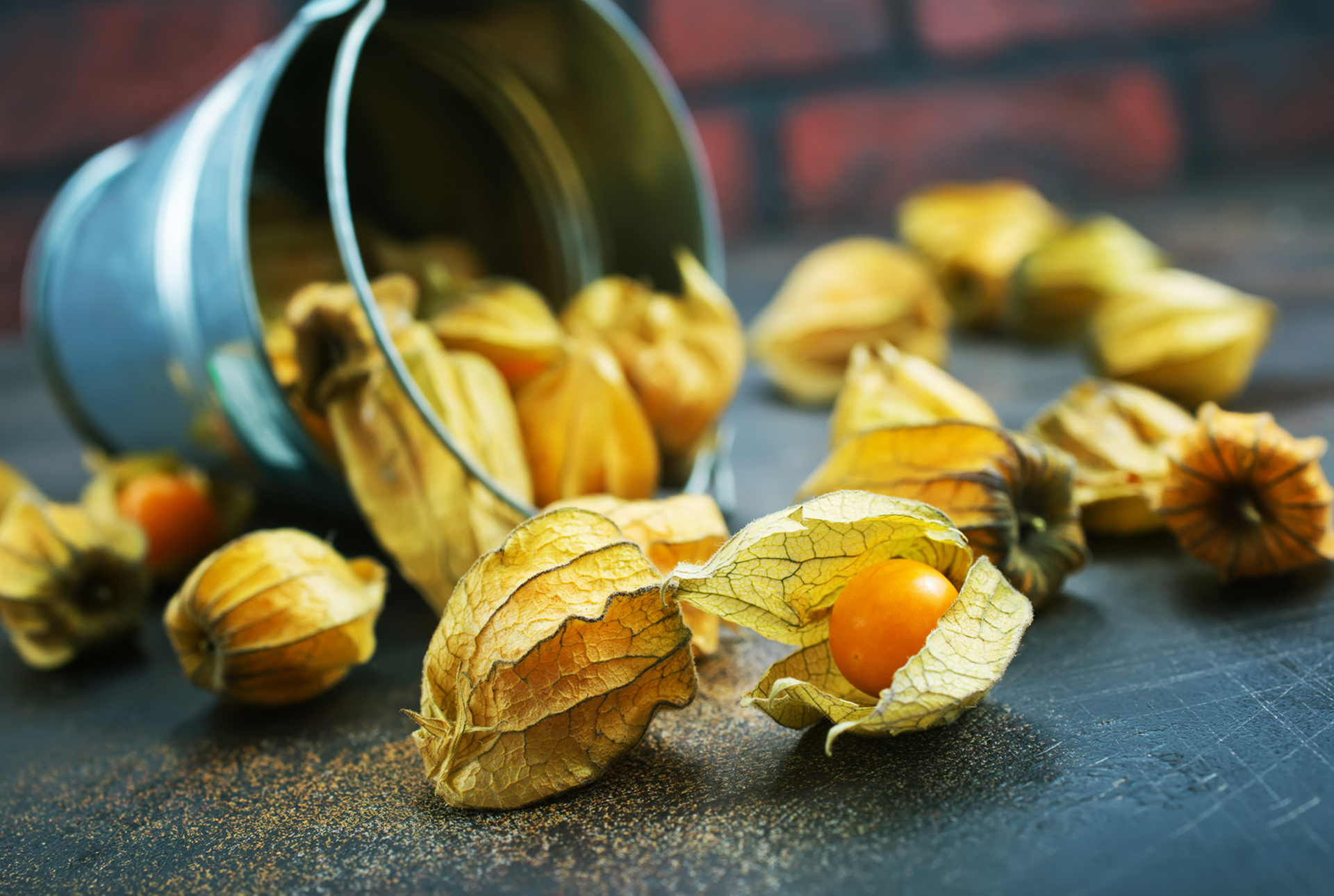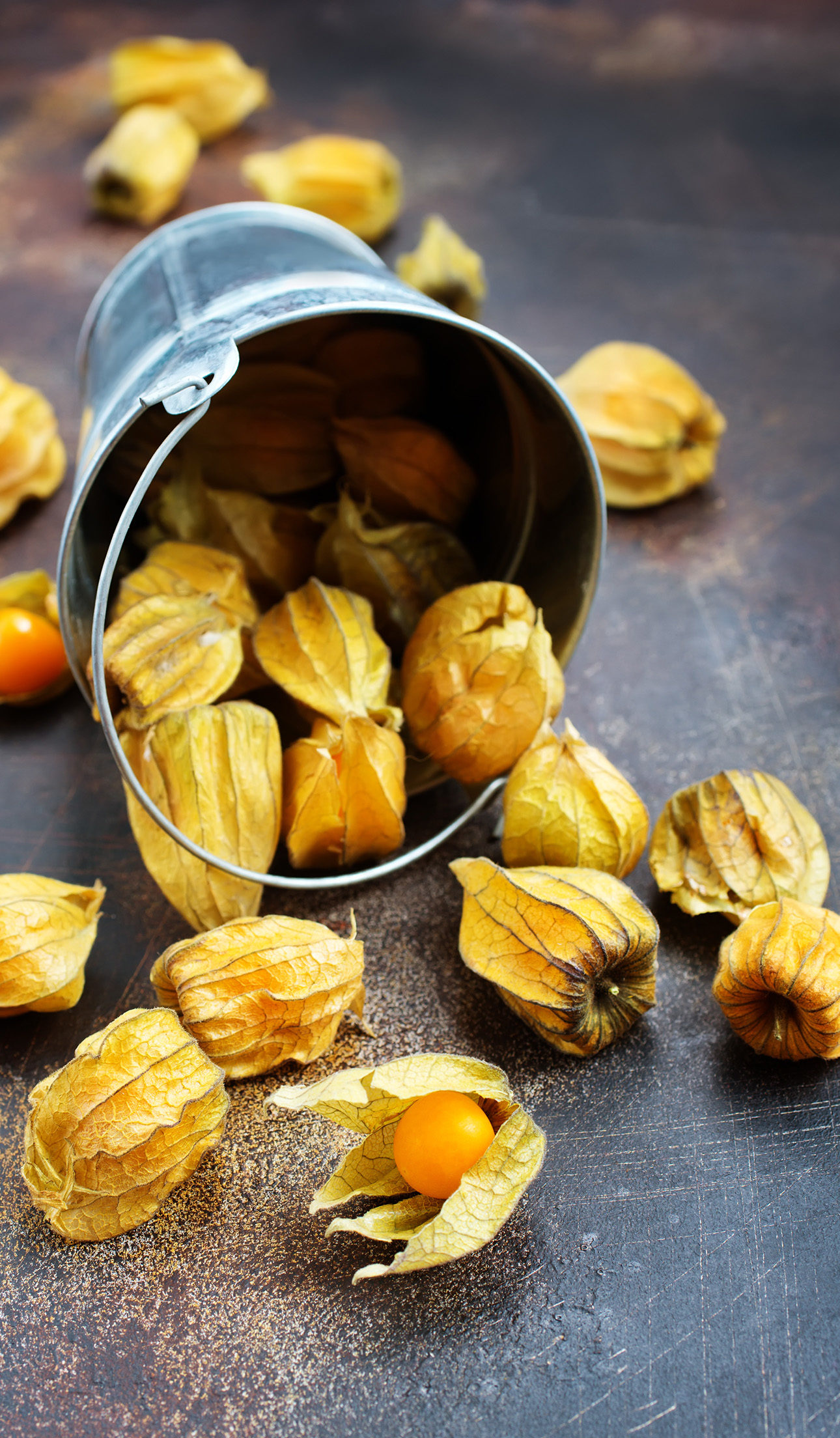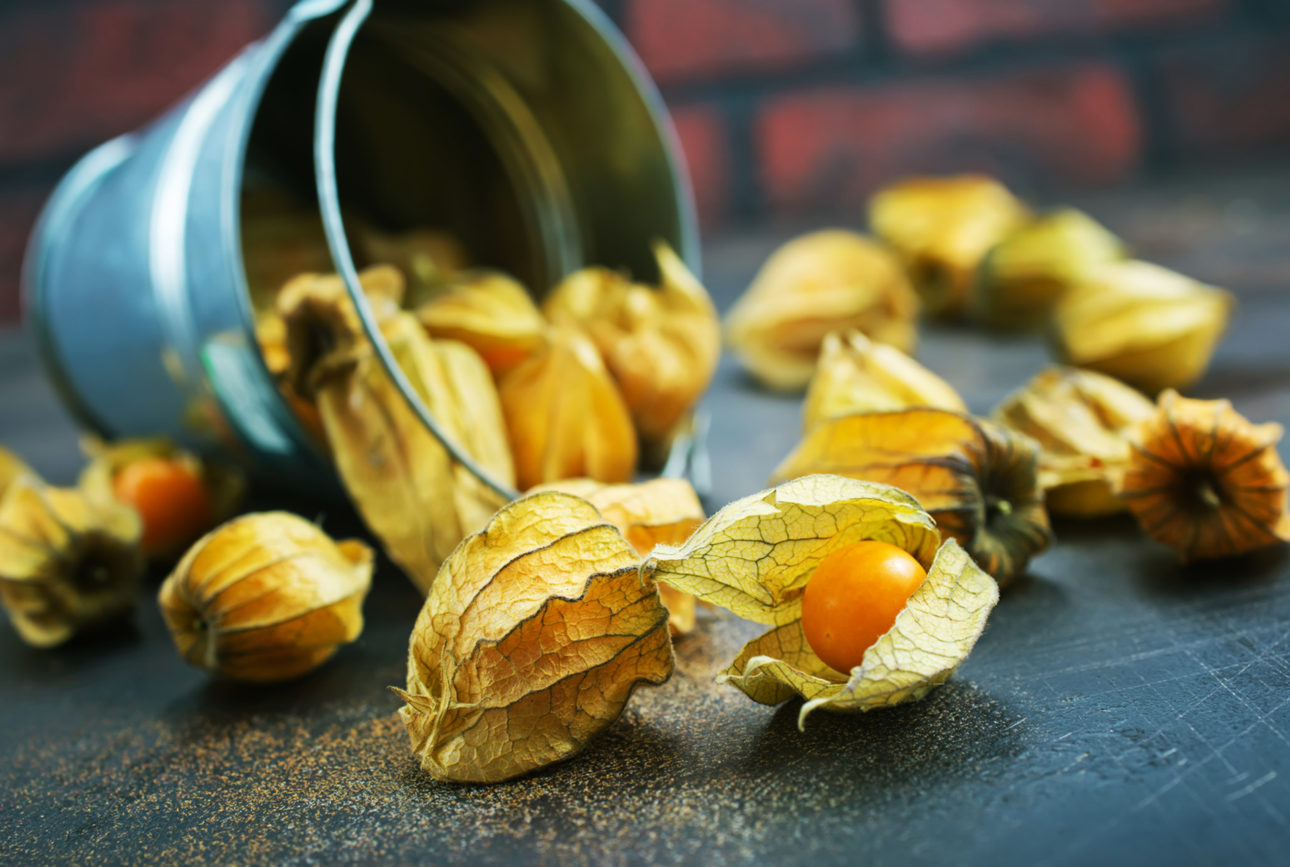
Special dessert? Dip Chinese lantern fruit in dark chocolate with the leaves out.
Origin
Ever heard of Chinese lanterns? You have almost certainly noticed them for their shape and color, similar to small cherry tomatoes wrapped in red or golden leaves that transform into a flower when they open. The plant is known as Physalis alkekengi, which is part of the nightshade family. It originated in Europe and Asia and its name comes from the latinized Arabic word “al-Kakang” which means, unsurprisingly, Chinese lantern. These berries are mainly consumed in the far east in the autumn, which is the season when the fruit appears. But they are also found in Italy except for in Puglia and Calabria. The greatest production of Chinese lanterns in Italy is in the province of Mantova. They grow both on flat land and hilly areas and can grow at altitudes of up to 1000m above sea level. They’re also found in plenty of gardens for decorative use. There are hundreds of varieties, such as Physalis peruvianus (also known as cape gooseberry, which have the same structure and shape but are beige in color), and Physalis ixocarpa, which produce much larger berries, similar to a tomato covered in a green chalice.
Cookit
The flavor of Chinese lanterns is unique: they are not very juicy or sweet and are slightly tart. They can be eaten on their own or used to decorate desserts. They’re perfect to add to apple, pear or bitter orange preserves. Or if you want to try a special dessert, dip them in dark or white chocolate after removing their outer layer. The leaves contain high amounts of solanine, a toxic substance that should be avoided. In fact, it’s best to clean the berries very well to remove any trace of resin. Chinese lantern fruit have a tart flavor similar to citrus, which pairs nicely both with sweet and savory. Try making a prawn salad with walnuts and Chinese lantern fruit, or pair them with persimmons. It will not only be delicious, but lovely to look at too.
Did you know that?
Chinese lanterns are known in Chinese medicine for their cleansing properties. Rich in vitamin C and citric acid, they help with water retention, and can have a laxative, purifying and calming effect. They’re also excellent at fighting kidney stones. The fact that they contain more vitamin C than a lemon means they’re great for your skin as well as being a strong anti inflammatory. They’re considered a ‘natural aspirin’ because this concentration of vitamin C helps the body bounce back from colds and flu. The leaves aren’t edible but can be used to make a compress that’s relaxing and helps fight inflammation. They can withstand cold temperatures, which means they can even be grown on balconies to take full advantage of their splendid decorative use, especially at Christmas time.




